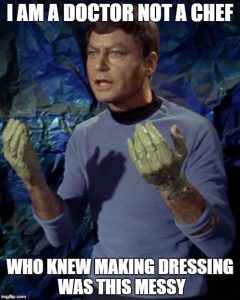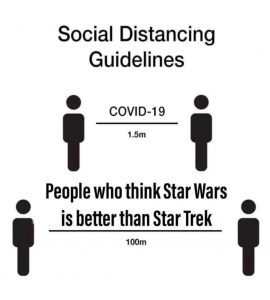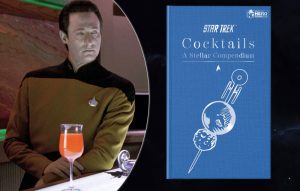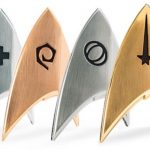Category: Uncategorized
Trivia Answers
Click this article to see the answers. Scroll down. Scroll down. Scroll down. Scroll down. Scroll down. Scroll down. Scroll down. Scroll down.Scroll down. Scroll down. Scroll down. Scroll down.Scroll down. Scroll down. Scroll down. Scroll down.Scroll down. Scroll down. Scroll down. Scroll down.Scroll down. Scroll down. Scroll down. Scroll down.Scroll down. Scroll down. Scroll down. Scroll down.Scroll down. Scroll down. Scroll down. Scroll down.Scroll down. Scroll down. Scroll down. Scroll down.Scroll down. Scroll down. Scroll down. Scroll down.
- Benjamn Sisko
- Charles "Trip" Tucker III
- Prixin
- Benjamin Sisko
- The Gratitude Festival
Captain’s Log, Supplemental: November 18th, 2020
Greetings, Terrans!
Thanks to those that attended last Saturday's meeting. It's so much fun to see people from far away that haven't been able to join us before Zoom meetings! It's also pretty cool that our attendance is increasing instead of the other way around.
Just a few updates for today's newsletter. First, I'd like to congratulate the person that stumped everyone with his baby picture! Lots and lots of guesses were submitted, but nobody got it right. That cute little guy was......Rich Perry!! Now that you know, you can see it in his eyes, right?
Remember to save the date on December 12th at 6pm for our holiday get-together. Details for this hour-long soiree will be posted in the next few weeks. You may want to start looking for an ugly sweater or glitzy uniform or something else to wear and share on our Zoom call.
One last reminder about paying dues is coming in the next few weeks to those who didn't pay in September. We know everybody's busy and we hope to keep everyone in the fold, especially since human (or alien) contact is so vitally important right now, so we're trying something new instead of simply removing folks from the list. We now have PayPal, Venmo and mail-in options, so hopefully we've made it as easy as possible!
For now, take care and stay safe during our uptick in COVID-19 cases! See you around the Galaxy!
Mary
Anson Mount joins METI
Here's a fun story about real life imitating art. METI, the scientific organization devoted to Messaging Extraterrestrial Intelligence, announced this week that actor Anson Mount has joined its Board of Directors.
METI was founded in 2015 to expand on SETI (Search for Extraterrestrial Intelligence). Instead of just listening for other life forms, METI sends signals to nearby stars in hopes of a reply.
The star of the upcoming Paramount+ series Star Trek: Strange New Worlds said in a statement: “It is a distinct privilege to be asked to join the outstanding scientists, artists, and innovators that make up the METI team. I look forward to helping this organization expand its footprint in our cultural landscape and educate the general public about our endeavors to connect with extraterrestrial intelligence through scientific methods as we continue to grapple with the implications of this work. As a Starfleet Captain, it brings me unbridled joy to be able to say that I am actually sending out a hail.”
Star Trek Stories Inspired by Horror Movie Classics
Halloween is over, but here's a list of horror-inspired episodes from StarTrek.com to get you thinking. Did you know they were based, however loosely, on these classics? Fascinating...
"Catspaw" (TOS) - The House on Haunted Hill (1959)
With a script from Psycho author Robert Bloch, it’s no surprise that the seventh episode of The Original Series’ second season has a horror feel. When Kirk, Spock, and Bones enter a creepy castle during their search for missing Sulu and Scotty, they encounter a host of spooky figures, including witches and a black cat. This imagery can be found in many old horror films, but none better capture the mélange of tropes like the William Castle spectacle indirectly responsible for his success. Hollywood legend holds that the financial success of 1959’s The House on Haunted Hill inspired Alfred Hitchcock to adapt Bloch’s novel. Starring Vincent Price as a billionaire who challenges treasure-seekers to spend 24 hours in his haunted mansion, The House on Haunted Hill is packed with the same type of campy apparitions that plague Kirk and his crew in “Catspaw.”
Star Trek: First Contact — Night of the Living Dead (1968)
From their first appearance in the season two Next Generation episode “Q Who,” the Borg established themselves as one of the most disturbing enemy races. But it wasn’t until the two-parter “The Best of Both Worlds” and the film First Contact that viewers saw everything the Borg can do. The Borg strip away their victims’ identities, reducing them to mindless drones, grotesque reminders of the people they used to be. Loss of identity has been a key part of zombie movies, ever since George Romero redefined the genre with 1968’s Night of the Living Dead. In one of the film’s most disturbing scenes, a young girl turns and kills her parents, who refuse to accept that their daughter has been replaced by a mindless monster. Similar scenes have appeared in the movies and tv shows that built on Romero’s premise. But none have captured the zombie ethos better than the Borg’s ominous warning, “Resistance is futile.”
"Sub Rosa" (TNG) — The Innocents (1961)
“Sub Rosa” regularly shows up on lists of worst TNG episodes, and even received some gentle ribbing in an episode of Lower Decks. The story of Dr. Crusher falling for a ghost on a planet modeled after 17th century Scotland sits awkwardly among science fiction tales about ongoing explorations into deep space. But “Sub Rosa” does belong to another, equally rich literary vein. “Sub Rosa” borrows heavily from the 1961 Jack Clayton film The Innocents, itself an adaptation of the Henry James novella The Turn of the Screw. In The Innocents, new governess Miss Giddens (Deborah Kerr) sees visions of previous caretakers Quint (Peter Wyngarde) and Jessel (Clytie Jessop), ghosts who may or may not threaten the children in her care. “Sub Rosa” eschews the children, but intensifies the gothic romance only implied in earlier adaptations, making it a unique entry among The Turn of the Screw adaptations.
Star Trek Nemesis — Nosferatu (1922)
The final big screen adventure of the TNG crew introduces the Remans, a Romulan race oppressed by the Empire and lead by Shinzon, a clone of Picard played by Tom Hardy. With their batlike features and telepathic abilities, the Remans quite resemble one of the world’s most iconic monsters, Count Orlok of the silent German expressionist film Nosferatu: A Symphony of Horror. An unauthorized adaptation of Dracula, Nosferatu keeps the same basic plot line as Bram Stoker’s novel. But where Count Dracula was a sophisticated aristocrat, actor Max Schreck plays Orlok like a true creature of the night. His twisted visage and claw like hands made for a striking image, one that still influences horror movies today. The Remans retain the beastly features of their cinematic forerunner, even as Rob Perlman brings an air of dignity to his performance as Shinzon’s viceroy.
"Empok Nor" (DS9) – John Carpenter’s The Thing (1982)
For a show that dealt with the supernatural more directly than any other Trek series, Deep Space Nine rarely featured horror episodes. Season five’s “Empok Nor” offers a rare exception, in which Garak accompanies Chief O’Brien and his engineers to the titular abandoned station. When Garak contracts a virus designed to make Cardassians kill outsiders, he goes on a murderous spree against his one-time allies, playing their trust against them. With its claustrophobic atmosphere and its portrayal of paranoia, “Empok Nor” mirrors the 1982 John Carpenter classic The Thing. Starring Kurt Russell and Keith David, The Thing drips with tension, as a shape-shifting alien infiltrates a remote Antarctic outpost. The humans turn against one another as they hunt down a creature that can look like anyone, providing the perfect groundwork for an episode that explores O’Brien’s past and Garak’s mercurial allegiances.
"The Thaw" (VOY) — It (1990)
No Trek series dabbled with horror as much as Voyager, starting with season two’s “The Thaw.” After discovering five stasis chambers connected to a life support system, Harry Kim and B’Elanna Torres go into deep sleep to search for survivors. But instead of colonists, they encounter a twisted circus troupe lead by a devious clown, played by Michael McKean. When the episode aired in 1996, “scary clown” meant only one thing: Pennywise, the demonic creature featured in 1990 tv movie based on Stephen King’s It. As portrayed by Tim Curry, Pennywise seethed with menace, even at his most playful. McKean gives a goofier performance for his clown, but he follows Curry’s lead whenever it’s time to threaten the Voyager crew.
"Cold Fire" (VOY) — Suspiria (1977)
To the casual viewer, season two’s “Cold Fire” might be a strange entry on this list. After all, there’s little overt horror in the story of Kes meeting a colony of Ocampans who have rejected the limits placed on her people and heightening her telepathic abilities. But these Ocampans serve a Nacene whose name immediately catches the attention of any scary movie fan: Suspira. Directed by Italian filmmaker Dario Argento, the psychedelic Suspiria follows an American dancer who finds out too late that a coven of witches run the school she’s attending. The episode uses none of the film’s iconic imagery, such as a hairy-handed beast with yellow eyes or a room filled with razor wire, but there’s a clear echo of Argento’s witches when Suspiria arrives on Voyager in the form of a creepy little girl.
"Darkling" (VOY) — Dr. Jekyll and Mr. Hyde (1920)
Robert Louis Stevenson’s tale of a kindly doctor whose experiments to remove his darker nature results in a brutish alter-ego called Mister Hyde has been adapted countless times. The best film version debuted in 1920 and featured John Barrymore as a magnetic and utterly unhinged Mr. Hyde. But the most unconventional adaptation might be the Voyager episode “Darkling.” Like Dr. Jekyll, Voyager’s Doctor only endeavors to improve himself, by loading into his personality matrix historical figures such as the poet Lord Byron and Mahatma Gandhi. But as he tries to isolate the best qualities of those figures, their worst impulses affect his programing as well, manifesting in a cloaked alter-ego who threatens the Voyager crew. It’s an exciting adventure in which the Doctor learns that embracing one’s humanity also involves acknowledging one’s dark side.
"Impulse" (ENT) — The Crazies (1973)
Although he’s best known for his movies about flesh-eating ghouls, George Romero gave us a different kind of monster with 1973’s The Crazies. Set in a small Pennsylvania town, The Crazies chronicles the destruction wrought by a biological weapon that turns regular people into violent sociopaths. As in Romero’s zombie movies, the scares in The Crazies come from watching people lose their identities and become something inhuman and animal-like. That premise becomes even more rich when applied to the usually emotionless Vulcans in the Enterprise season three episode “Impulse.” When the NX-01 answers a distress call, Archer and his crew discover not the serene scientists they expect but angry killer Vulcans. Things grow worse when T’Pol begins emotional outbursts, forcing Phlox to find a cure before it’s too late. It may not hit as close to home as Romero’s movie, but “Impulse” unsettles viewers by forcing us watch characters we love give themselves over to hatred.
"Context is for Kings" (DSC) - Aliens (1986)
In the third episode of Discovery’s first season, Michael Burnham arrives on the Discovery and meets the hawkish Captain Lorca, who assigns her to investigate the destroyed U.S.S. Glenn. As they search the ship’s wreckage, Burnham and her new crewmates learn what destroyed the Glenn: a powerful beast, seemingly impervious to their weapons. Throughout “Context is for Kings,” keen horror fans may notice similarities with Aliens, the 1986 sci-fi horror sequel directed by James Cameron. Where the first Alien film pitted Sigourney Weaver’s Ellen Ripley and her fellow blue-collar workers against a single xenomorph, Aliens teams Ripley with a space marine platoon fighting an entire nest of Aliens. Where the marines fall apart when their guns and their bravado fail them, Ripley overcomes her fear to rescue the sole surviving colonist. By referencing Aliens, “Context” establishes Burnham as a hero modeled after Ripley, intelligent and compassionate as she is brave.
Couldn’t Resist This One!
They’re cocktails, but not as we know them!
What do you get for an ex-bartender who is also captain of a Star Trek Club?? Or for any of you that like to mix a fine libation now and again? The long-awaited (by me since I preordered it months ago) book - "Star Trek Cocktails, A Stellar Compendium" - has arrived. There are some serious Trekkie good feels within these fun recipes - everything from the Set Chasers to Stun to Par'Mach on the Beach, from Sisko's Sazerac to Captain Janeway's Irish Coffee, they have created some great options. Here's a particular favorite, the Fizzbin:
Ingredients:
- 3.5 oz. fresh orange juice
- 7 oz. chilled champagne
Instructions:
- Pour the champagne into two flutes. Add the orange juice. It's that sample (unlike Fizzbin).
Description:
Any day of celebration gets off to an effervescent start with a refreshing glass of orange juice and champagne. This drink will bring as much sparkle into your life as a convivial hand of Fizzbin, the game played on Beta Antares IV. Like the game, the rules of this Fizzbin are eccentric, so you might want to replace one measure of champagne with grenadine for a half-Fizzbin (if it's Tuesday) or include a dash of vodka for a "Ferengi Wallbanger Fizzbin", if fizzbinnin' at night. For a Classic Royal Fizzbin, add a little cherry liqueur, as Human kings and queens did way back in the 21st century.
Thank me later Mary
Who is This Little Guy?
Wow, that was QUICK!
Guess what happened yesterday?! Production began in Toronto on the 4th season of Star Trek: Discovery! And we're only three episodes in to Season 3! Check out the article from TrekMovie.com, complete with some fun visuals, HERE.
Speaking of Politics…
Well, we really weren't speaking of politics, but it was a catchy headline. As of this writing on Tuesday afternoon, the election lines are long and nobody knows the outcome. I assume that we won't know it as you're reading this, either, so let's take a look at the politics of other groups, shall we?
The following is taken from StarTrek.com's Beginners' Guide to Interstellar Politics:
The Klingon High Council
When Star Trek: The Original Series premiered in the midst of the Cold War, the brusque, imposing, and monolithic Klingons were analogues for the Russians, who, at the time, were characterized in American media as (you guessed it) brusque, imposing, and monolithic. But as Trek progressed, so did its portrayal of Klingons. While some Klingon-centric episodes flirted with the weary trope of the “noble savage” — a concept that addresses how colonizers have historically ignored Indigenous peoples’ complex histories, and instead characterized them as proud but backwards warriors — later episodes imbued Klingon culture and government with significantly more depth.
Once ruled by a monarch, the Klingons now follow the dictates of the Klingon High Council, a legislature overseen by a chancellor. But regardless of fancy-pants words like “legislature” and “chancellor,” Klingons still really like to fight, so when it comes to succession, “peaceful and orderly elections” are less of a thing than “vicious, unmerciful combat to determine who’s the strongest.”
The Romulan Senate
Much as TOS drew parallels between the Russians and the Klingons, the Roman Empire informed nearly everything about the martial Romulans and their Romulan Star Empire. Even the Romulan Imperial Senate is a riff on the Roman Senate, except Romulan senators somehow have even worse haircuts. Or, you know, they did… until Shinzon assassinated the senators in Star Trek Nemesis and Romulus got eaten by a supernova in Star Trek (2009). Session adjourned, Romulan Imperial Senate!
The Bajoran Republic and the Vedek Assembly
Ostensibly, Bajor’s government is the Bajoran Republic, but anyone who spends two seconds on Deep Space 9 knows who’s really in charge. That’d be the rigid, traditional Vedek Assembly, which oversees Bajor’s planetwide religion. Bajor is a de facto theocracy — a government in which policy is determined not by what’s best for the people, but by ancient religious tenets. To be fair, most Bajorans seem pretty cool with it.
The United Federation of Planets
Originally conceived as the Coalition of Planets, it wasn’t long until diplomats from Earth, Vulcan, Tellar, and Andoria realized their relationship was getting serious — so they formed the United Federation of Planets, Trek’s optimistic vision of a powerful, peaceful, and multicultural democracy. The Federation has a number of Earthbound inspirations; while its structure draws heavily from the League of Nations and the United Nations, there’s also some stuff in there from the United States.
From Star Trek VI: The Undiscovered Country to Star Trek: Discovery, much of the best Trek examines not only the promise of the Federation, but the challenges it faces — along with the question of how a representative government might function if it wasn’t undermined by economic conflict and disparity.
“People are no longer obsessed with the accumulation of things,” Picard says of the Federation-ized future in TNG’s “The Neutral Zone.” “We’ve eliminated hunger, want, the need for possessions. We’ve grown out of our infancy.” And while the result of a governing body that rejects nationalism and conquest in favor of humanism and exploration remains as inspiring as ever, Star Trek: Picard offers a timely reminder: Functional governments are hard work, and even the strongest ones can betray their ideals and purpose, especially when populaces fail to remain engaged and active.
The Xindi Council and the Dominion
The Federation is hardly the only interstellar superpower — plenty of other races have also teamed up, and most aren’t interested in the Federation’s flower-power daydreams. In Star Trek: Enterprise, the Xindi Council, made up of five species that evolved on the same planet, attacked a pre-Federation Earth, and in DS9, the Dominion—an uneasy alliance chiefly made up of the Founders, the Cardassians, and the Breen—became the Federation’s greatest threat to date. (It’s worth pointing out, too, that the Dominion is essentially a dark, “Mirror Universe” version of the Federation. And the implication that many less-powerful worlds joined the Dominion out of self-preservation rather than shared ideology raises a discomfiting question: How many worlds joined the Federation for the same reason?)
Though the Dominion eventually fell, they deserve some props: They genetically engineered two entire species just to deal with the crummiest parts of running a government! The Vorta took care of all the boring administrative stuff, and the Jem’Hadar took care of all the bloody dying stuff! If nothing else, the Dominion’s leaders were great at structuring a bureaucracy.




